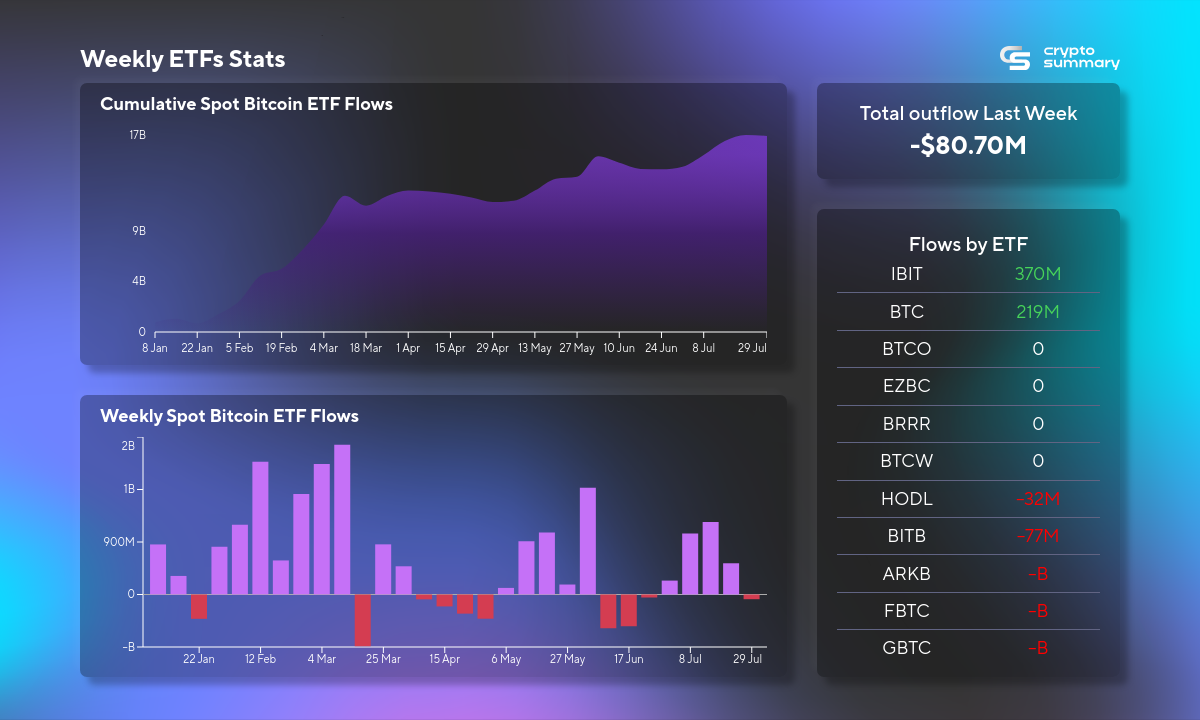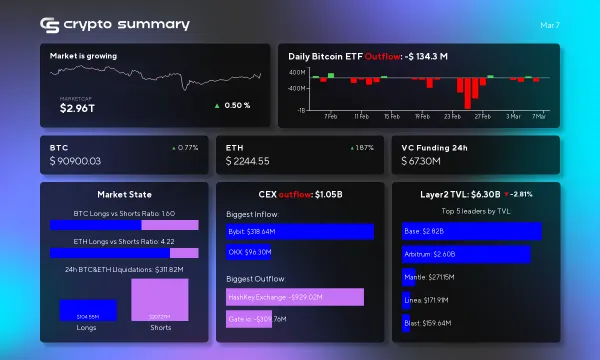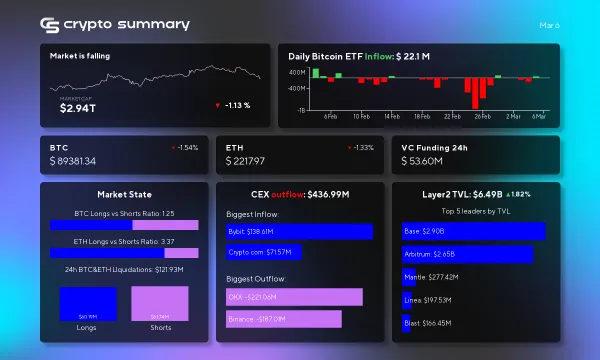Bitcoin ETFs Show Mixed Performance Amid Market Rebound and Federal Reserve Impact

Trend
The current week shows a significant change from previous weeks, characterized by a notable shift in fund movements. The volume of funds has increased by -115.08%, amounting to -$80.70M. This week can be characterized as a period of recovery after a decline, indicating a potential market rebound.
Biggest Gainer
The ETF with the biggest gain this week is GBTC, with a gain of -$245.10M. GBTC, or Grayscale Bitcoin Trust, is an investment vehicle that allows investors to gain exposure to Bitcoin without the need to directly purchase the cryptocurrency. It is one of the most popular Bitcoin ETFs, known for its substantial market influence and liquidity.
Biggest Loser
The ETF with the biggest loss this week is Monday, with a loss of $124.10M. Monday ETF is a relatively lesser-known fund that focuses on a diversified portfolio of technology and innovation-driven companies. Its significant loss indicates a potential shift in investor sentiment away from tech-centric investments this week.
Day with the Highest Inflow
The day with the highest inflow was IBIT, with an amount of $205.60M. On this day, the ETF with the highest gain was GBTC, with a gain of -$54.30M, while the ETF with the highest loss was Friday, with a loss of -$237.40M.
GBTC, as previously described, is the Grayscale Bitcoin Trust. Friday ETF focuses on a mix of traditional and digital assets, providing a balanced approach to investment. The substantial loss for Friday indicates a potential shift in investor confidence towards more established digital assets like Bitcoin.
Day with the Highest Outflow
The day with the highest outflow was IBIT, with an amount of $42.80M. On this day, the ETF with the highest gain was FBTC, with a gain of -$104.10M.
FBTC is a Bitcoin ETF that provides direct exposure to Bitcoin, similar to GBTC but with different management strategies and fee structures. The significant gain for FBTC suggests a strong investor interest in Bitcoin during this period.
Bitcoin ETFs in Australia
After three years of effort, VanEck is set to launch the first Bitcoin ETF on Australia's largest trading exchange, the Australian Securities Exchange (ASX), this Thursday. This development marks a significant milestone for the cryptocurrency market in Australia, potentially opening the door for more mainstream adoption of Bitcoin ETFs in the region. For more details, visit the primary source.
Bitcoin ETF Performance
Bitcoin ETFs experienced a notable shift in performance recently. Last week, these funds shed $621 million worth of assets, a stark contrast to the previous week where they gained nearly $2 billion. This fluctuation highlights the volatile nature of crypto investments and the shifting investor sentiment. For further information, see the primary source.
Corporate Adoption of Crypto
Despite the introduction of Bitcoin ETFs, corporate adoption of cryptocurrency is still considered to be in the 'amateur league,' according to the co-founder of Trust Square. This suggests that while financial products like ETFs are making strides, broader corporate engagement and trust in the crypto industry remain in the early stages. More insights can be found in the primary source.
Impact of Federal Reserve Policies
The Federal Reserve's decision to leave interest rates unchanged has likely influenced investors to reduce their exposure to fixed-supply assets such as Bitcoin ETFs. This move by the Federal Open Market Committee (FOMC) has been interpreted as hawkish, prompting outflows from these funds. For more details, refer to the primary source.
Upcoming Ethereum ETFs
Market experts and signals are providing clues about when Ethereum ETFs might become available to investors. While no specific dates have been confirmed, these indicators suggest that Ethereum ETFs could soon follow in the footsteps of Bitcoin ETFs, offering another avenue for crypto investment. For more information, check out the primary source.




